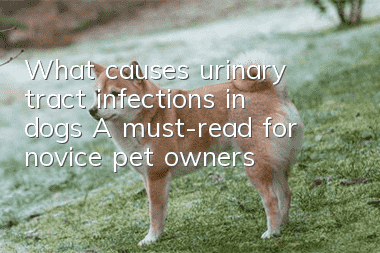Precautions for Husky Pregnancy

Pregnancy is a natural physiological phenomenon, and there is no need to formulate any special management laws. Just to ensure the safety of the fetus, smooth delivery, and the safety of mother and child, breeders should always pay attention to the health of the female dog and avoid sudden changes in the living conditions that the pet dog is accustomed to. The feeding and management of female dogs that are confirmed to be pregnant are mainly to avoid strenuous exercise, fighting with other dogs and prevent infection with diseases. Let’s take a look at the precautions for Husky pregnancy with the editor:
1. Appropriate amount of exercise. Temporarily avoid letting the female dog do too much exercise for 3-4 days after mating. Just take a walk. After 4 days, you can gradually increase the amount of exercise. By the 10th or 15th day, you can basically return to the level before mating. As much exercise as possible, for example, dog owners can ride a bicycle and take their dog for a jog, but they still need to be careful to avoid dangerous sports, such as jumping over obstacles or chasing balls. In short, you must pay attention to the appropriate amount of exercise. You can neither let it lie motionless indoors nor let it chase and run with other dogs. When taking the dog out of the kennel, be sure to wear a collar and leash to help control its movements and avoid accidents. Proper exercise every day is the best way to prevent dystocia, but do not engage in strenuous exercise. During pregnancy, female dogs often become sluggish and lazy. At this time, dog owners must give their female dogs appropriate outdoor activities and let them bask in the sun. It is absolutely forbidden to let their mothers run, jump, run up and down stairs, or fight with other dogs. Wait to avoid miscarriage.
2. Easily cope with pregnancy reactions. After a female dog is pregnant, the uterus will increase day by day, compressing the abdominal cavity, and the nervous system function will also change due to entering the pregnancy period, causing nausea, vomiting, discomfort, frequent urination, or constipation in the female dog. , and some dogs will experience mental changes. For example, dogs that do not usually bite people will occasionally bite people. This is just like the emotional changes that occur during pregnancy in humans. They are all normal pregnancy reactions. The owners Don't worry too much.
3. Deworming during pregnancy: Drugs should be used to expel roundworms and tapeworms around the 30th day of pregnancy to avoid infecting the fetus and puppies. Be careful to use regular drugs under the guidance of a veterinarian. Do not feed too much anthelmintics to avoid miscarriage.
4. Feeding and nutrition On the 50th day, it is time to prepare the delivery room. At this time, the expectant dog only needs to go out for walks and defecate every day, and the food supply habits are the same as usual. The nutrition of the female dog during pregnancy is very important and plays a decisive role in the dog's health, ensuring the normal development of the fetal dog, preventing miscarriage, and the secretion of the female dog's milk. Pregnant female dogs should be fed foods with higher nutritional value to increase the content of protein, calories, calcium and phosphorus. In the early stages of pregnancy (within about 35 days), pregnant female dogs can be raised according to the original feeding method. At 35-42 days, 42-49 days, and 49-60 days, the feed should be increased by 10%, 20%, and 30% respectively on the original basis. %, especially in the later period, attention should be paid to adding some feed that is easy to digest, high in protein, rich in calcium, phosphorus and vitamins. At 35-45 days of pregnancy, you should feed 3 times, 44-60 days, feeding 4 times a day.
However, in the second half of pregnancy, do not feed too much. It is best to reduce the amount of food at each meal and divide one meal into three meals. Some people believe that excessive fetal growth will cause difficulties in giving birth to the female dog. Therefore, they do not supplement the pregnant female dog with too much nutrition. They want to make the fetus smaller in size and increase the nutrition after the puppies are born. People engaged in breeding should not mistakenly believe this statement. Excessive nutritional intake can cause excessive fetal size and cause dystocia in female dogs. This has no scientific reason. In fact, if the mother's body is unhealthy, it may not be easy for the fetus to give birth if it is small. However, if the nutrition is sufficient, the mother's body will be strong enough, and the baby can be safely delivered even if the fetus is slightly larger. Therefore, breeders must start paying attention to the nutritional supply of the female dog after the dog is mated, and do not wait until after the litter is born to start supplementing unawares.
- Are Kangal dogs highly intelligent? How much does one cost?
- What to do if your dog bites the wire
- How to deworm Labrador puppies
- Observing the psychological characteristics of Akita dogs from their movements can help train them better.
- How many days does Corgi menstrual period last?
- Dog eating habits
- Four signs of dog health problems
- Diagnosis and treatment of canine esophagitis
- How to feed dogs during different physiological stages?
- Will the dog recognize its old owner?



